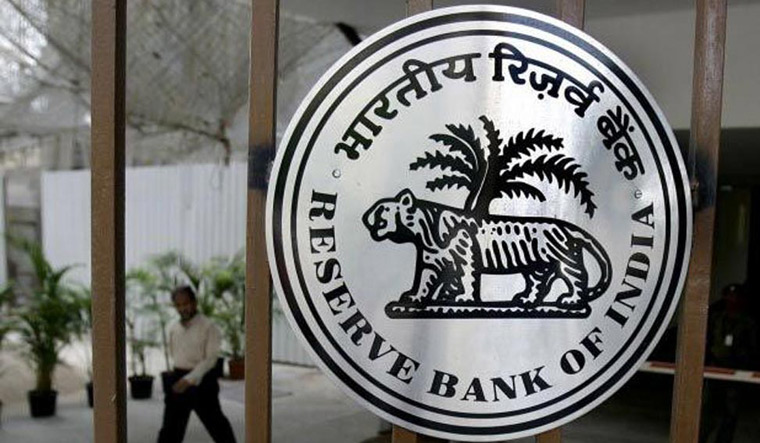The Reserve Bank of India (RBI) reduced its repo rate by another 0.25 per cent (25 basis points) on Thursday to 5.75 per cent, taking the cumulative reduction in the benchmark rate over three consecutive monetary policy committee (MPC) meetings to 0.75 per cent (75 bps). It also changed the policy stance to “accomodative”, indicating that inflation remaining below target, it will continue to take measures to boost growth.
ALSO READ
- Extreme weather may pose risk to inflation, says RBI Bulletin
- Normal monsoon predicted for 2024. Is it enough to bring down inflation?
- Climate change poses challenges for monetary policy, says RBI report
- RBI governor calls for for greater participation of banks in rupee derivatives in India, abroad
- With inflation likely to cool and growth strong, shallow rate cuts likely in the second half of FY25
- With focus firmly on inflation, RBI keeps repo rate on hold at 6.5%; sees GDP growing 7% in 2024-25
Will the interest rates now come down? Will a rate cut help revive the economy? Here’s what experts have to say:
Rajnish Kumar, chairman, SBI
The RBI policy decision to change the policy stance to accommodative will simultaneously help the financial system navigate to a lower term structure of interest rates and accommodate growth concerns. On the regulatory front, the decision to lower the Basel III leverage ratio will augment the lendable resource of banks.”
Zarin Daruwala, CEO, Standard Chartered Bank, India:
“The combination of the repo rate cut, the change to an accommodative stance and the resolve to provide adequate liquidity will provide the impetus to counter growth and investment headwinds. A review of the liquidity framework is a welcome move and should aid monetary transmission.”
Shubhada Rao, chief economist, Yes Bank:
With growth conditions likely to remain lacklustre in the near-term, and inflation expected to average 3.5 per cent in FY20, we continue to expect the MPC to deliver another 25 bps rate cut in the next review in August, taking the cumulative monetary easing to 100 bps in the current cycle. The road thereafter would get data dependent with monsoon outturn, sustainability of the recent softness in global commodity prices, global trade outlook, and signals from the upcoming FY20 Union budget.
Upasna Bhardwaj and Suvodeep Rakshit, economists, Kotak Institutional Equities:
The MPC’s acknowledgement of the need to address the slowing growth on the back of muted headline inflation, along with an accommodative stance, strengthens our case for another 25 bps cut in August. However, the evolution of food inflation in the second half of FY20 could provide some upside to MPCs' inflation forecasts, which could restrict further cuts beyond August. Besides rate cuts, the RBI is likely to focus on ensuring smoother monetary transmission to revive growth.
Madhavi Arora, economist, Edelweiss Securities:
MPC is poised to deliver another 25bps cut in August. Additionally, with RBI focus moving towards better rate transmission, the liquidity stance may move to marginal surplus. We think that the MPC will likely keep CRR (cash reserve ratio) unchanged and the RBI will continue to use OMO (open market operations) purchases, foreign exchange swaps and spot intervention as preferred tools to manage overall liquidity.
Umesh Revankar, MD and CEO, Shriram Transport Finance:
As the monsoon prediction is very positive, we expected the RBI to take a bolder step with a 50 bps rate cut that would have given clear signal to India Inc to push for growth and take investment decisions, thereby maintaining the capex cycle. Because of higher interest rates, consumer spending like auto sales and real estate has been very weak. We urge RBI to open up funding to retail NBFCs through banks that will stimulate the consumer spending.
Mihir Vohra, chief investment officer, Max Life Insurance:
Given that the growth prospects may not change quickly, we expect another 0.25 per cent to 0.50 per cent cut in the reference rates over the next two quarters. However, a more focused approach is needed to address issues in certain segments like NBFC (non-banking finance companies) and housing finance, failing which transmission of lower rates to end-borrowers may not happen fast enough.
Anagha Deodhar, economist, ICICI Securities:
Given the challenging domestic and global environment, growth is likely to remain weak in the second half of FY20. Although supporting growth is not the MPC’s primary mandate, in the current environment it has assumed greater significance. Given the lower growth and inflation expectations, it was apt to change the stance to accommodative. It indicates that more rate cuts are on the table, possibly in the next policy itself.
Khushru Jijina, MD, Piramal Capital and Housing Finance:
The credit crunch in the NBFC sector has witnessed a corresponding decline in manufacturing and construction activities in the last two quarters of 2018-19. We anticipate more decisive and pro-active policy measures to address the current liquidity crisis that will enable NBFCs to restore lending activities, especially to critical sectors.



